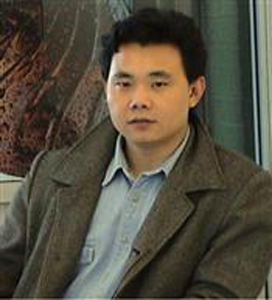Program Information
Impact of Large SSD On the Plan Quality of Energy-Intensity Modulated Electron Therapy
L Jin1*, A Eldib1, J Fan2, J Li1, L Wang1, C Ma1, (1) Fox Chase Cancer Center, Philadelphia, PA, (2) Virtua Fox Chase Cancer Center, Philadelphia, PA
SU-E-T-628 Sunday 3:00PM - 6:00PM Room: Exhibit HallPurpose:
In photon MLC (pMLC) delivered energy-intensity modulated electron therapy, a short SSD was preferred for reducing beam penumbra caused by electron in-air scatter. However, due to some restrictions (e.g. table height limit on some accelerators), a large SSD may be an only choice. This work presents our preliminary results of the impact of a large SSD on an ultimate MERT plan.
Methods:
A house-grown Monte Carlo (MC)-based optimization/dose calculation code was used to generate plans for the Artiste linac with a breast phantom, at 60 cm and 90 cm SSD, respectively. The plans employed four different electron energies (6, 9, 12, 15 MeV) and was normalized to ensure 85% of the CTV to receive 100% of the prescription dose. Their DVHs are then evaluated for target (breast), left lung and heart.
Results:
When a 90 cm SSD was used instead of a 60 cm SSD, the maximum dose of the CTV increased by 5% while the minimum dose decreased by 3.6%. The left lung showed a 10% increase in the maximum dose while D10% (dose to 10% of volume) and D30% of the lung increased by a factor of 1.39 and 2.23, respectively. The maximum dose to the heart increased by 20% and its D10% and D30% were about 1.5 times larger.
Conclusion:
With a larger SSD (e.g., 90 cm as compared to 60 cm), increased air-scattered electrons may lead to substantial deterioration of the overall plan quality -increased target dose heterogeneity and higher doses to critical structures. However, absolute doses received by these critical structures may be still low and further investigations are warranted to find out as to whether MERT with a large SSD is still a better treatment as compared with conventional treatments for some disease sites.
Contact Email:


